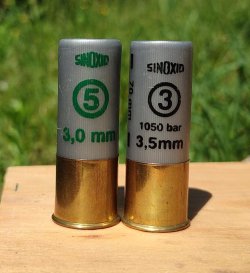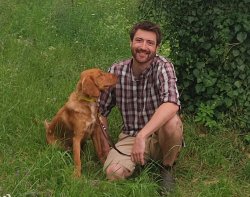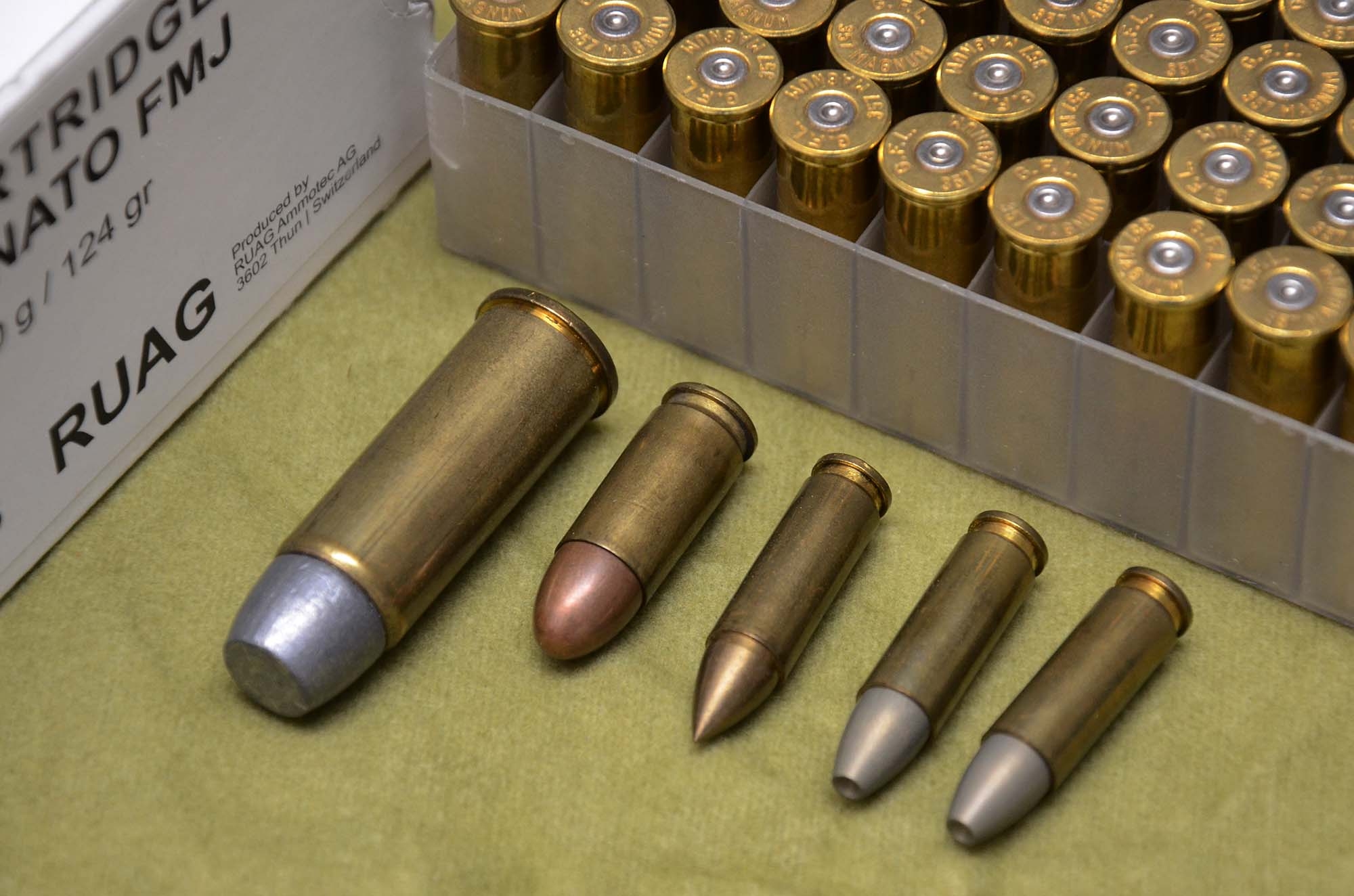A steadily increasing proportion of cloven-hoofed game worldwide, including Switzerland, has been harvested without lead ammunition for years, free from any obligation and for a variety of reasons. There is a large selection of lead-free ammunition on the market, many products have been tried and tested over many years and are considered particularly ecological. However, lead-free hunting bullets have different properties to lead bullets and are therefore not suitable or available for all applications. Due to the tough material, particular attention must be paid to the increased risk and danger of considerably more energetic ricochets.
The older the gun technology is, the more it relies on the use of lead. In contrast to rifle ammunition, the replacement of lead shot in shotguns is not a constructive development. It is a technical and political means of coercion that will be considered in more detail below.
Lead bans in ammunition: how is it related to AEWA and ECHA?

Switzerland banned the use of lead shot in wetlands and shallow water zones back in 1998 when it joined the UN Agreement on the Conservation of African-Eurasian Migratory Waterbirds (AEWA). Virtually all European nations have been members for many years. The ban on lead shot for waterfowl hunting serves to protect the waterfowl as a such. It has been documented many times that waterfowl may ingest lead shot when dabbling and could, in the worst of cases, die from it. After many years of consultation, an additional ban on lead shot in wetlands throughout the EU by the European Chemicals Agency (ECHA) has been in force since 16 February 2023. The ECHA's latest and pending application includes a general ban on the use and sale of lead shot and the use of lead bullets.
At this point the question arises: are there environmental and health related problems that require proactive action in Switzerland?

In 2020, the Federal Department of Environment, Transport, Energy and Communications made an indirect statement in the proposed revision of the Hunting Act and wanted to put lead ammunition on the ban list for the most part. The critical observer noticed that lead-free cannot be equated with "non-toxic" and "environmentally friendly" as expected. According to the federal government, copper and zinc shot should also be banned for waterfowl hunting, as they are very harmful to bodies of water.
What are the consequences of the realisation, that a lead ban isn’t a comprehensive solution? Is there a thorough analysis of all substitutes?
The answer is short and simple: No! In the ECHA's "Restriction Report" on lead shot, zinc is not mentioned at all and copper only once in the ammunition costs. As in Switzerland, steel shot, bismuth and tungsten are proposed as substitutes without taking the other options into account. The topic has been of concern to various nations for a long time and various assessments can be found. To summarise, with exception of steel shot, all substitutes are heavy metals that have similar problems to lead and have also been banned in some cases. They can be fatal if swallowed, are suspected of having a carcinogenic effect (projectiles lodged in the body) or pollute water bodies. Tungsten and bismuth have in common, that they have barely been used until a few years ago and are therefore hardly researched to date. As environmentally friendly and only slightly toxic magical heavy metals, they have experienced a skyrocketing demand in recent decades. The experience gained in the meantime by the US Environmental Protection Agency (EPA) and various researchers shows that previous assumptions need to be critically questioned and the effects on humans and the environment need to be researched further as knowledge is lacking.
Soft iron shot: "steel shot" and its ballistic properties – Is this an equivalent alternative to lead shot?

Based on international sales figures, only steel shot has established itself for waterfowl hunting by a wide margin. To achieve a sufficient effect with steel shot, it is often generally recommended to choose the shot pellets 0.5 mm larger. The fundamental problem is the considerably worse shot pattern as a result. Although the larger steel pellets are slightly heavier than lead pellets, the larger surface area means that the pellet is slowed down more rapid in the air. This physical disadvantage (lower sectional density) also means that it penetrates significantly less even with the same impact energy. With both disadvantages, fewer hits remain, which kill less effectively. Nevertheless, steel shot is successfully used to hunt waterfowl in North America. However, their many years of usage show that 0.75 - 1 mm larger shot is required for a comparable range and effect (similar sectional density). In contrast to rifle calibers, new shot gauges are required for a proper use of steel shot, which are only available in newer and more powerful proofed shotguns (CIP).

Harmfulness of copper as a projectile material
Copper is omnipresent, it is considered as a strategic metal of the future. The high demand goes hand in hand with problems in global raw material extraction. Environmental pollution and precarious working conditions raise ethical questions. But copper is also making the headlines in local agriculture with negative headlines such as "Organic farmers spray heavy metals". It is a highly controversial fungicide that is a micronutrient in very small quantities but remains an environmental toxin nevertheless. The EU Food Safety Authority (EFSA) therefore wants to replace it as quickly as possible, which means, it only receives half the approval period of seven years as a plant protection product. Legal limit values for health and environmental protection are also in force in residential areas. It isn’t recommended any more to use copper pipes for drinking water, as particular young children are at risk. Rainwater from large copper surfaces may only seep into the ground after passing filtering measures. The latest research results confirm the precautions. Copper appears to be more harmful to microbial communities in the soil than lead, not only in water bodies. Previously, it was assumed that they were equally toxic. However, as metals, both are initially unproblematic in the soil and only become bioactive when dissolved by corrosion. Archaeologists are directly confronted with this process and can report that copper artefacts in the soil are subject to continuous decomposition, the speed of which is heavily dependent on the composition of the soil. In contrast, lead artefacts are generally regarded as stable and are said to remain in the soil for an almost unlimited period.
What now? This is the situation regarding lead ammunition in Switzerland – Or to put it another way: lead is not unproblematic either, but the risks are known and can be assessed.
The issues surrounding the problem of lead and its alternatives are very diverse and span various fields of science and technology. It is unclear how meaningful, relevant and proven many sources are. However, one thing seems certain: there is no problem-free and ecological alternative that is completely superior to lead and can fully replace it. The question therefore arises for which problems, apart from waterfowl, a solution must be found throughout Switzerland.

The Federal Office of Public Health (FOPH) titles the information page on lead as follows: "Lead – Toxic, but unavoidable". The introductory paragraph points out that lead is everywhere in the environment, from the air we breathe to the food we eat, and that laws and behavioural rules ensure low and harmless lead exposure. In 2021, the Swiss Federal Office for the Environment (FOEN) published a very comprehensive report on the topic of "Lead in Switzerland – Use, disposal and environmental input". The report shows the use of lead and its dangers since the dawn of mankind up to the present day, including modern-day hunting. Lead is a natural decomposition product and thus occurs naturally in the soil. In the last century alone, more than 55,000 tonnes of lead, at peak times >1300 t/a (tonnes per year), were released into the air in Switzerland via exhaust and industrial fumes and subsequently into regional soils and waters. Particularly in residential areas, next to roads and near industrial areas, there are high levels of lead contamination in the soil. As a result, Zurich city foxes still have higher blood lead levels than their relatives in the countryside. As lead is bound in the soil and is hardly absorbed by plants, the contamination cannot degrade; the lead content is only reduced by leaching into bodies of water or being carried away by the air as dust. Today, around 27 tonnes of lead per year are still released into the air and water through various emissions, of which around 5 tonnes per year are deposited on agricultural land. Around 10 t/a of lead is also deposited onto the agricultural fields through fertilisers (90 t/a in 1990). According to the Ordinance on the Pollutant Release Register (SR 814.017), industrial companies only have to report their lead emissions if they release more than 200 kg of lead into the air, >20 kg into the water or >20 kg into the soil each year. The lead input into the soil from hunting was estimated based on federal hunting statistics with various generous assumptions. This resulted in an assumed lead deposition of 2.9 tonnes per year, of which around 0.9 tonnes are from rifle ammunition. On the other hand, 24 tonnes of lead per year are released into the ground at open field shooting ranges and a further 76 tonnes per year through shooting practice in natural bullet traps.
+++ The difference between bullet lead and all other lead emissions is the type of lead +++ The usual lead emissions are released into the environment as very fine particles and as lead compounds, which renders the entire amount of lead directly bioavailable. Bullet lead, on the other hand, remains in the soil as a solid metal body and is encapsulated by an oxidised layer, which means only a fraction of the annual lead input is able to have any effect at all. Various Swiss monitoring projects show that lead levels in agricultural and forest soils, but also in the air and in water bodies, are good and constant or decreasing. In groundwater monitoring (NAQUA), in contrast to copper, only two measured values slightly above the limit of quantification have been found which were sampled in urban areas. The blood-lead content of the European population has fallen from high levels in the 1980s to consistently low levels since 2010. The facts and figures are consistent with the FOPH's data. Despite the huge historical contamination burdens and still omnipresent lead emissions, there are currently no general problems in the environment or for the population.
Conclusion on handling lead and lead-free ammunition
Lead must by no means be trivialised, it is an omnipresent substance whose dangers can be considerable, but which are just as well known and therefore very assessable and avoidable. Through careful handling and selective measures, the risks to humans, animals and the environment are very low. Hunting-related lead input into the soil is unproblematic and seem to be less relevant than copper. Local protective measures are effective and sufficient for the safety of waterfowl in shallow water zones or locally endangered species. It seems questionable when politicians and even the scientific community generally label "lead-free" as non-toxic and harmless, although the problems are known and no comprehensive risk analysis and comparison of all bullet materials is available. Criticism of hunting will never cease and therefor it is an existential question for the conservation of hunting, whether a comprehensive lead ban is a real added value or just a sham solution. Hunters bear a great deal of responsibility for the safety during hunting activities, to produce healthy food and to avoid animal suffering. One should be able to weigh these factors individually and according to regional circumstances now as in future, as huge personal responsibilities and greatest care must be taken and therefor the best possible means must be granted too. It is sensible to embrace new technologies and utilise their added value. However, it is just as sensible to pursue local solutions to local problems, as it has been in the past. Whether we consider ourselves lucky or not, the decision on the future of lead will in any case be fought out in Brussels at a far-reaching political level. It remains to be seen whether the recent elections of the new EU Parliament have permanently changed the mood and the majorities, and whether an objective and appropriate approach to the issue will now return.

About the author: Oliver Truninger is 33 years old and has been a handgun shooter and fisherman since youth, focussing on hunting and reloading since 2012. As the president of a local hunting supervision association, he is familiar with hunting policy, is dedicated to hunting education and newly into hunting dogs with his German Spaniel. Having recently completed a degree in HVAC engineering, he works professionally in the building technology sector as a technical developer and as a specialist editor for the JAGD & NATUR magazine.
This article appeared in the June 2024 issue of JAGD & NATUR. JAGD & NATUR is the only independent Swiss hunting magazine and voice from hunters for hunters for over 25 years. It covers the following topics in monthly issues: Hunting & Society, Wildlife Biology, Hunting Practice, Dogs and Hunting Equipment. We would like to thank the publisher and editors for allowing us to publish this interesting article.










